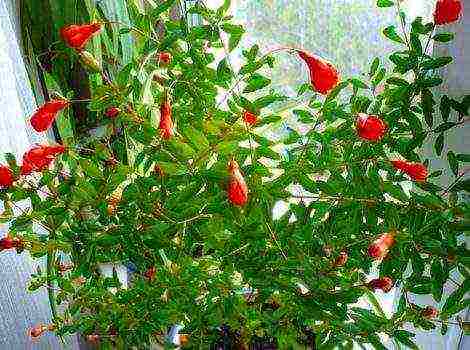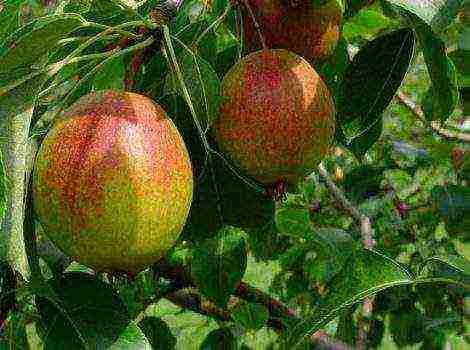There can be several reasons why the plum does not bear fruit. Most often, there are six reasons. By eliminating them, you can ensure that the tree bears fruit constantly.
So, the reasons why your plum remains not blooming and not fruiting:
- physiological carrion;
- infertility of the tree variety;
- the presence of infectious diseases in a tree;
- insects are pests;
- climate features;
- the conditions in which the tree is planted.
Physiological carrion, this is a defect, as a result of which the plum ceases to bear fruit. Outwardly, this can be seen when several trees begin to bloom at the same time, at the same time ovaries appear on them.
But one tree cannot provide adequate nutrition for all new fruits, and as a result, some of the ovaries fall off. The reason for this is weak roots.
In this case, the fight or prevention of the defect will have no effect. There are cases when the owners of the trees form the crown of the plum in such a way that only part of the ovaries falls off, but this happens very, very rarely.
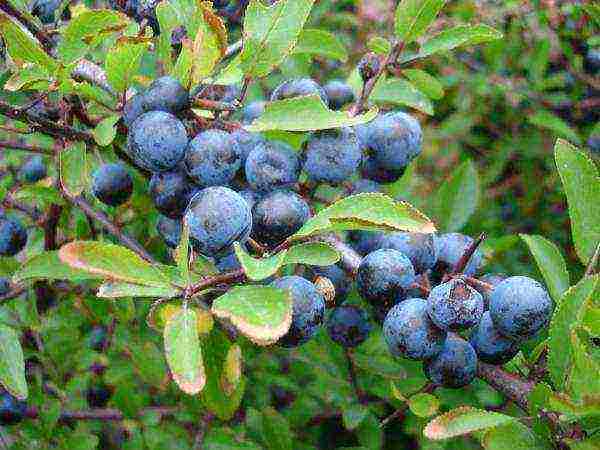
The infertility of the variety, the very name of the defect speaks for itself. When buying seedlings, the variety was chosen incorrectly, as a result, gardeners have been unsuccessfully waiting for fruits from the plum for several years.
With the help of insects, by the method of cross-pollination, the plum can bear fruit. But this method does not give any guarantee, because insects are active only in good weather. In the rain, flowers may not be pollinated.
Therefore it is better make a choice in favor of fruiting varieties that self-pollinate... Among these are:
- Niagara;
- Stanley;
- Italian Hungarian;
- Anna Shpet;
- Monarch;
- Herman.
Some infectious diseases can prevent plum trees from bearing fruit. The most common types of infections are:
- Clasterosporium disease... It is a fungus that infects the tissues of newly born leaves. The fungus looks like a small reddish spot that gradually dies, leaving holes in the leaves. The pathogenic fungus, in addition to the leaves, infects the branches, trunk and even fruits.
- Gray fruit rot... This disease looks like a small gray speck on the fetus. With this disease, the pulp of the fruit rots, outwardly visible small specks of ash-gray color. The embryo of this disease tolerates the winter time on the diseased parts of the tree.
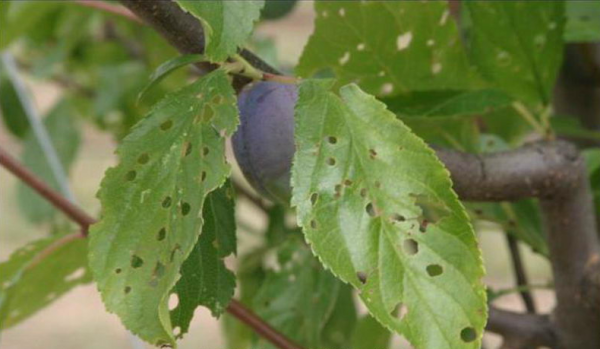
Disease can be avoided with prevention. You can burn leaves, pluck infected fruits, and spray trees with special preparations several times per season.
Plum may stop bearing fruit due to the invasion of pests... These can be larvae of plum sawflies, caterpillars of the plum moth, caterpillars of the plum moth.
These insects eat the seeds of the fruit and the fruit itself. Affected fruits fall from the tree.
You can fight pests by treating trees with chemical compounds, using trapping belts, digging up the ground around the tree.
The moth can be destroyed with microbial preparations. Insecticides help well against thickeners.
Why does the plum not bear fruit? Plum Sawyer:
Weather is another factor, due to which the plum can stop bearing fruit. The buds can freeze after spring thaws. With temperature fluctuations and strong winds, pollen sterilization may occur. In harsh conditions, the plum is very uncomfortable, but in the heat, the plum can dry out.
The planting conditions of trees directly affect their ability to bear fruit. Plums are very moody trees... The ground under the drain should not contain a high concentration of acids.
For neutralization, ash or slaked lime can be poured into the ground. Plums should not be planted in the shade or next to a large tree. Plum feels great in the sun. If she does not have enough light, then she will cease to bear fruit.
It also happens that in spring, plum trees bloom, but do not bear fruit and even their ovaries crumble to the ground. There may be several reasons for this.
Freezing... When plum blossoms, one should consider not only the flower itself, but also its pistil. You need to pay attention to its color. If the pistil is frozen in winter, it will be black.
A healthy pistil is always green. A tree can freeze during the flowering period if the temperature drops below zero degrees in spring. If the pistil is damaged, then after flowering the fruits will not tie.
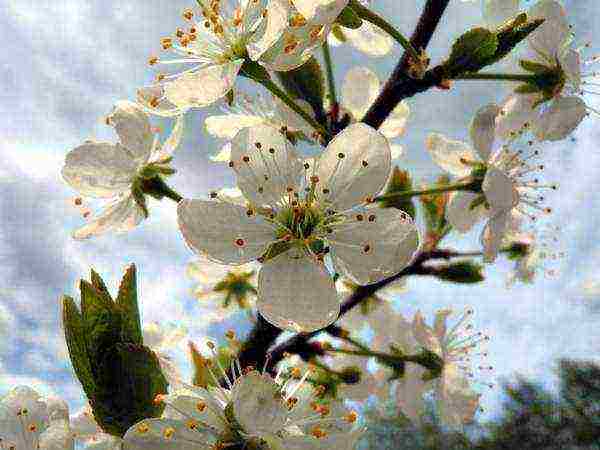
Insufficient pollination... Most plum trees self-pollinate, but if one tree or several of the same variety are planted in the garden, the trees may bloom, but no ovaries will appear. It is better to plant several trees of different varieties.
Non-regionalized varieties... The plum variety must be suitable for the natural conditions of the area in which it will be grown. Having bought an exotic variety, you can never wait for fruits on it.
Lack of nutrition... A very common reason that ovaries do not form after flowering is that the soil is poor in nutrients. Basically, the earth has a very low potassium content.
And this is the most important element for the formation of ovaries. Therefore, when the plum is three years old, in the fall you need to feed the soil with potassium. Ash contains a lot of potassium.
Varieties and their correct planting
After planting seedlings, you should not expect the first fruits to appear immediately. There is a certain periodthrough which the plum trees will begin to bear fruit.
It depends on the genetic characteristics of the variety and the pollinating variety, as well as on the conditions in which the trees grow.
To understand how long does a tree give its first fruits, you need to take into account the distinctive features of the variety, which can be combined into three large groups:
- Trees that bear fruit on a one-year growth... This group includes varieties of Canadian, Chinese, Ussuriyskaya and American plums. These varieties develop powerful shoots, on which a large number of new buds are born. For these varieties, it is necessary to ensure continuous growth of the shoots. The stronger the shoots grow, the faster the tree will bear fruit.
- Trees bearing fruit on perennial overgrown branches... This type includes varieties that originated in Western Europe and the south. These are the varieties: Peach, Anna Shpet, Hungarian Domashnyaya. It is important for these varieties that their crown is constantly thinned out.
- Intermediate fruiting... The principle is as follows: on annual growth and on perennial branches. This type includes varieties: Volzhskaya krasavitsa, Pamyat Timiryazeva, Mirnaya and others. It is important to thin out the crown and maintain the growth of the shoots when leaving.
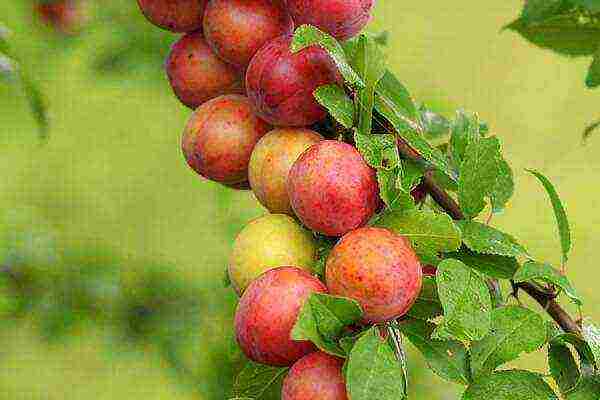
The first fruits appear when the shoots reach a certain number of internodes on the kidneys. To make these processes go faster, you can independently shape the crown by cutting out skeletal branches.
Good feeding and timely soil moistening are required.
In what year does the plum begin to bear fruit?
If you grow seedlings according to the rules, then the plum will begin to bear fruit 4-5 years after planting... Therefore, when choosing seedlings, they will definitely find out what kind they are: self-fertile or self-fertile.
Based on this, other seedlings of other varieties are bought and matched to each other. Better opt for self-fertile plum varieties.
Seedlings of each of the varieties are examined before purchasing. They should correspond in quality to the area of their planting and in a group with each other give a good harvest.
You may be interested in the following publications:
- Detailed description of the Pissardi plum variety.
- Detailed description of the Candy plum variety.
- A detailed description of the variety of plums Egg blue.
When planting a tree, and after receiving the first fruits, many gardeners begin to wonder how many years a plum tree can bear fruit. BUT how many years can it even live?
To keep the plum alive as long as possible, seedlings are planted on lighted plots of land so that several varieties of plums coexist nearby. If favorable conditions are created for the growth of plums and they are maintained all the time, then the crop can be harvested every year.
But in some varieties, fruitful years alternate with lean ones. Generally, the plum tree can bear fruit for up to 20 years... After this age, the tree begins to age, dries out very much, and soon it simply dies.
What to do?
There are a few simple steps you can take to get a good harvest of plums every year. Here are some of them:
- Transplanting trees, planting new ones is carried out only in the spring.
- About 15 kg of rotted manure or compost, 0.5 kg of superphosphate, a little potassium salt or 1.5 kg of sifted ash are pre-poured into a dug hole for planting a tree.
- In the first three years of life, "vitamins" can be added to the soil near the tree: in the spring, add urea or saltpeter, manure, and ash.
- If the weather is dry, then plum trees need to be watered a lot.
- In order for the frost and the sun not to negatively affect the trees, you need to whitewash and tie the boles.
- It is better to clean and rinse cracks in the bark with a 2% solution of ferrous sulfate.
The answer to these simple steps is stable annual harvest of plums.
Why do the leaves dry up and the fruits fall off near the plum, and how to help the tree:
